|
2010. June 09-13 - Istria, Croatia
Isztria, Horvátország
|
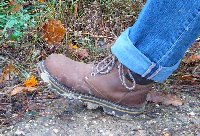
HIKING PAGE
|

MAIN
PAGE
|
|
Click
to any of the
pictures - Kattints bármelyik képre
This
was a short four-days holiday. - Ez egy rövid, négynapos szabi volt.
|
EXCURSION TO BRIJUNI NATIONAL PARK
- Brijuni National Park consist of 14 islands at the south-west coast
of Peninsula Istria. The islands are famous for the natural beauty,
Roman ruins, buildings from the Venezian Ruling and Austro-Hungarian
Monarchy and it was the residence of the Ex-Yuogoslavian
president, Josip Broz Tito who lived between 1892 and1982.
KIRÁNDULÁS A BRIJUNI NEMZETI PARKBA - A Brijuni Nemzeti Park 14 szigetből áll az Isztriai-félsziget dél-nyugati partja mellett.
A szigetek természeti szépségükről híresek, vannak itt római romok,
épületek a Velencei urialom és az Osztrák-Magyar Monarchia idejéből és
itt volt a rezidenciája az ex-jugoszláv elnöknek, Joszip Broz Titónak,
aki 1892 és 1982 között élt. |
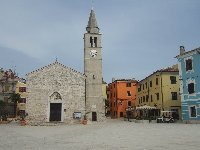 |
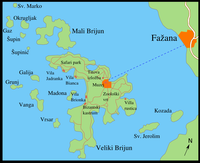 |
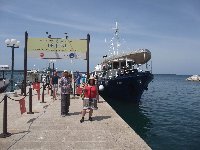 |
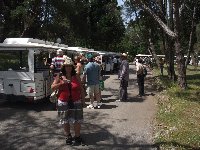 |
| 1. Faana is a cute little town which is the starting point of our excursion. - Faana helyes kisváros, kirándulásunk kiindulópontja. | 2. The map of Brijuni islands -
A Brijuni szigetek térképe | 3. The port of Faana -
Faana kikötője |
4. We arrived to island "Veliki Brijuni". All the tourists have guided tour on this train -
A "Veliki Brijuni" szigeten a turistákat ez a kisvonat viszi idegenvezetővel. |
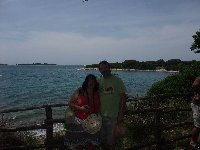 |
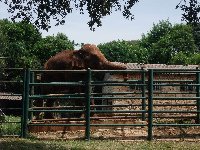 |
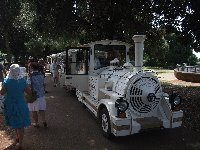 |
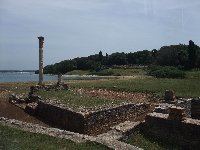 |
| 5. We stopped at this scenic point - Ezen a szép helyen megálltunk. | 6.
President Tito received wild animals from several political leaders of
the world who came here for visit. This elephant is one of those. -
Tito elnök számos vadállatot kapott ajándékba a világ vezető
politikusaitól, akik ellátogattak ide. Ez ez alefánt is abból a korból
származik. | 7. The tourist train stops at certain palces. - A túristavonat néhány helyen megáll. |
8. Ruins from the Roman times. - A római időkből származó romok.
|
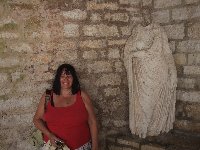 |
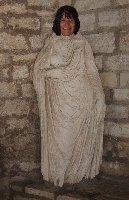 |
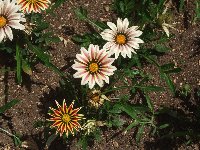 |
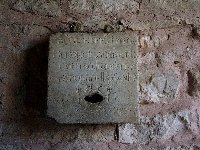 |
9. The Romans created statues with replaceable head. -
A rómaiak cserélhető fejű szobrokat készítettek. | 10. The head was changed according the current "political winds". - Mindig a politikai szeleknek megfelelő fej került a szoborra. | 11. Flowers - Virágok | 12.
In the Medieval times, during the night the local inhabitants put names of
sick people in this box. Next day the authorities expelled the person.- A középkorban a lakosok ebbe a dobozba bedobhatták beteg ismerősük nevét. Másnap a hatóságok kitoloncolták az illetőt. |
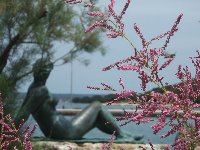 |
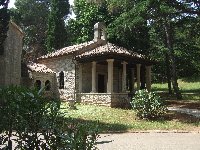 |
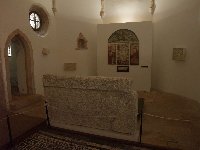 |
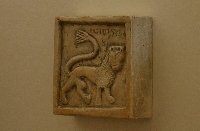 |
| 13. Venus - Vénusz | 14. Small Gothic church of St German - A Szt Germán gótikus templom | 15. Inside of the church - A templom belsejében | 16. The lion was famous symbol in the Venezian times -
Az oroszlán a Velencei idők szimbóluma volt |

|
| 17.
The fresco "Danse Macabre" (Dance of the Death) is symbolizing the
universality of the death: no matter how rich or poor is a person, the
destiny of everybody is death. - A
"Dance Macabre" (Haláltánc) freskó a halál mindenekfeletti hatalmát
szimbolizálja: nem számít ki volt gazdag és ki volt szegény,
mindenkinek egy a sorsa: a halál. |
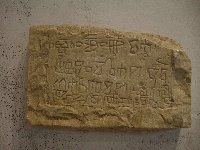 | 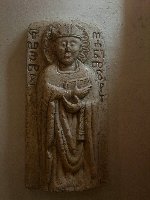 | 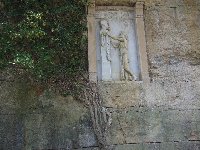 |
|
| 17. Galgolitic (ancient Croatian) writing. - A régi horvát írás, a glagolit | 18. Stone carvings of St. Martin, with Glagolit letters - A kőfaragás Szt. Mártont ábrázolja, glagolit felirattal | 19. Monument of Dr. Robert Koch, who made efforts for stopping malaria on the island. - Dr. Robert Koch emlékműve, aki a szigeten a malária megállításért fáradozott. |
|
PHOTO EXHIBITION OF PRESIDENT TITO - TITO ELNÖK FOTÓKIÁLLÍTÁSA
ivjeti znači tvaralački se ugraditi u vrijeme i prostor u kojem ivi. O tebi govore tvoja djela ti ostaje.
The above text is at the entrance of the Tito Museum, and it has the follwoing meaning:
Living
means the efforts to integrate yourself in the time and environment in
which you live. The work you leave behind speaks about you.
A fenti szöveg - amely a Tito múzeum bejáratánál olvasható - magyar fordítása az alábbi:
Élni annyit jelent, hogy beilleszkedönk az időbe és a térbe. A hátrhagyott életműved rólad beszél.
|
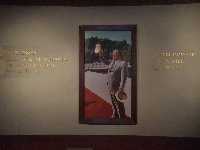 | 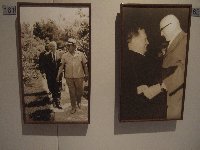 | 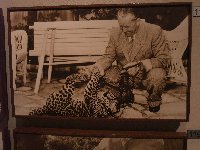 | 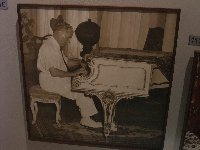 |
| 20. The large photo od President Tito at the entrace of Tito Museum, and the above mentioned text. - A Tito múzeum bejáratánál Tito elnök nagy képe van kirakva, a fent említett mondatokkal. | 21.
Tito had visitors from all over the world: political leaders and
prominent persons of the cultural life. On the photos: Kádár János,
Hungarian leader and Urho Kekonnen Finnish president. -
Titót gyakran látogatták vezető politikusok és a kultúrális világ
szereplői. A képen Kádár János (bal) és Urho Kekkonen (jobb)
látható. | 22. Tito recieved wild animals from political leaders. -
Tito sok vadállatot kapott ajndékba a politikai vezetőktől. | 23. Tito played the piano. -
Tito zongorázott is. |
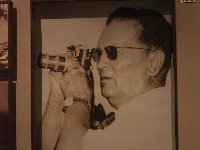 | 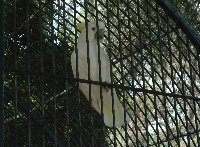 | 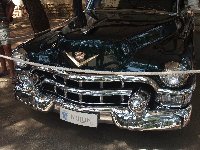 | 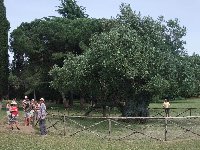 |
| 24. Tito loved photography. -
Tito szerette a fényképezést. | 25. KOKI, the yellow-crested cockatoo was Tito's favourite bird. The talkative bird is 52 years old. -
KOKI, a sárga-taréjos kakadu Tito kedvenc madara volt. A beszélő madár most 52 éves. | 26. Tito's Cadillac -
Tito Cadillacje | 27. Ca. 1600 years old olive tree. It is one of the oldest ones in the Mediterranean. -
Kb. 1600 éves olajfa, egyike a Mediterrán térség legöregebb olajfáinak. |
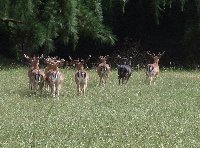 | 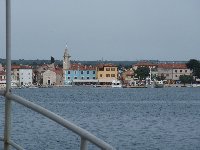 | 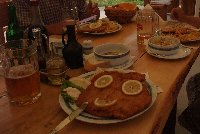 |
|
28. Here are the "gardeners" of the island. No need for grass cutter machines. They never strike, never complain. -
Itt vannak a sziget "kertészei". Nincs szükségük fűnyírógépekre. Soha nem sztrájkolnak, nem panaszkodnak. | 29. Arriving back to Faana. -
Visszeérkezünk Faanába. | 30. We skipped the lunch, but the dinner was great. -
Jól esett ez a vacsora, miután az ebédet kihagytuk. | |
WALK IN ROVINJ - Rovinj is a picturesque town on the western coast of Penninsula Istria.
SÉTA ROVINJBAN - Rovinj festői szépségű városka az Istriai-félsziget nyugati partján. |
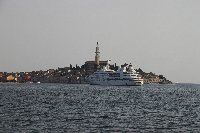 | 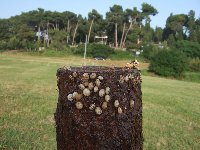 | 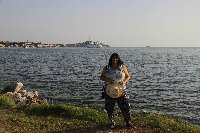 | 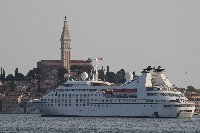 |
30. The view of Rovinj is always amazing. -
Rovinj látványa mindig lenyűgöző. | 31. Lot of snails -
Sok csiga | 32. Klári | 33. A big cruiser in the bay of Rovinj. - Nagy tengerjáró a Rovinji öbölben. |
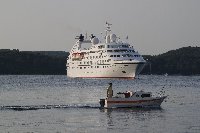 | 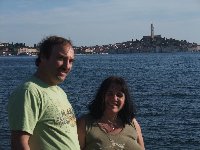 |  | 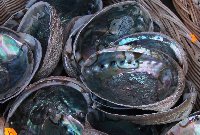 |
| 33. A big boat contra little boat - Nagy hajó - kis hajó | 34. Gábor, Klári | 35. A street in Rovinj -
Egy rovinji utca | 36. Nice sea shells -
Szép tengerikagylók |
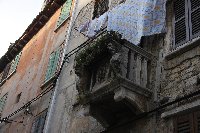 | 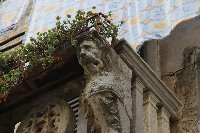 | 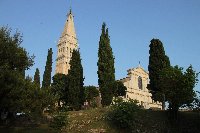 | 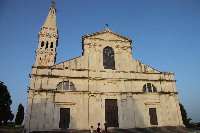 |
38. Look at this balcony, lions are holding it -
Ezt a balkont az oroszlánok tartják. | 39. It is very heavy, you can see on his face. -
Nehéz lehet nagyon, amint az látszik az arcán. | 40. Church of St Eufemia -
A Szent Eufémia templom | 41. Church of St Eufemia -
A Szent Eufémia templom |
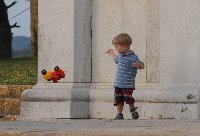 | 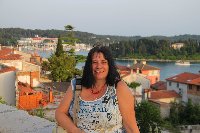 | 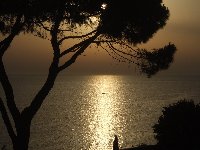 | 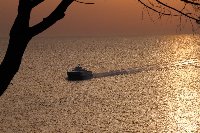 |
42. Click the boy to see how is he playing. -
Kattints a képre, nézd meg, hogy játszik a fiú. | 43. Klári | 44. Sunset - Naplemente | 45. Sunset and fast boat - Naplemente és gyorshajó |
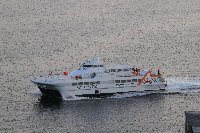 | 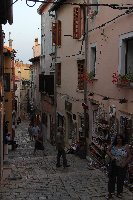 | 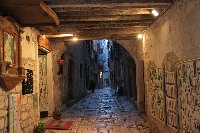 | 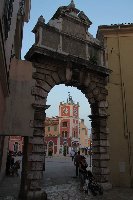 |
| 46. The fast boat is arriving from Venice- A gyorshajó Velencéből jön | 47. A street in Rovinj- Egy rovinji utca | 48. A street in Rovinj- Egy rovinji utca | 49. The lion gate in Rovinj-
Az oroszlános kapu Rovinjban |
-
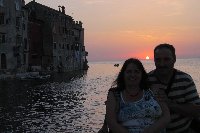
| -
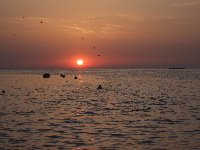
| -
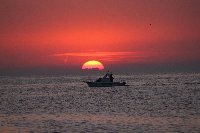
| -
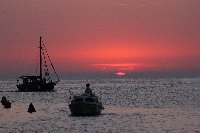
|
50. Romantic evening in Rovinj-
Romantikus este Rovinjban | 51. Sunset in Rovinj -
Rovinji naplemente | 52. Sunset in Rovinj -
Rovinji naplemente | 53. Sunset in Rovinj -
Rovinji naplemente |
-
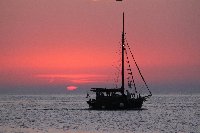
| | | |
54. Sunset in Rovinj -
Rovinji naplemente | | | |
| THE APARTMANT CAMP - AZ APARTMAN CAMPING |
-
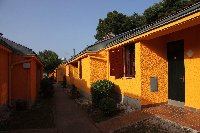
| -
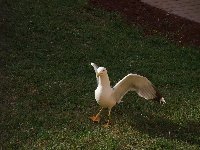
| -
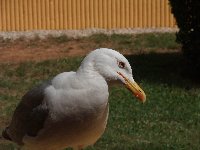
| -
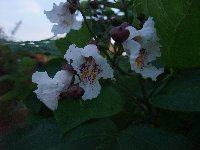
|
55. The street where we lived -
Ebben az utcában laktunk | 56. He always came for breakfast - Ő mindig megjelent a reggelinél | 57. He became our little friend - Ő lett a kis barátunk | 58. Beautiful plants in the garden - A kertben szép növények voltak |
-
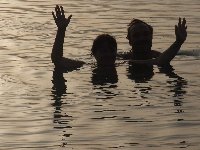
| -
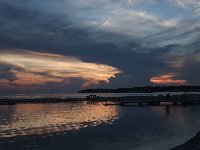
| -
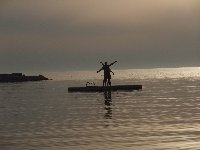
| -
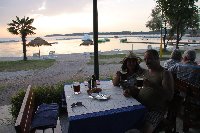
|
59. Evening swimming -
Esti fürdés | 60. Sunset and threatening dark clouds - Naplemente és fenygető kinézetű sötét felhők | 61. Our sunset ballet show - Alkonyati balett bemutatónk | 62. Sunset with beer - Naplemente sörrel |
-
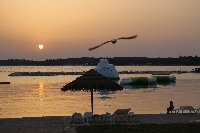
| -
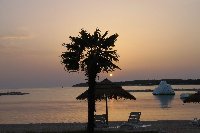
| -
| -
|
63. Adriatic sunset -
Naplemente az Adrián | 64. Adriatic sunset -
Naplemente az Adrián | | |
SHORT STOP IN BOLJUN
- Boljun is a small hilltop village in Central Istria, in picturesque
environment, in west direction of Učka mountain. It has 73 inhabitants.
Main occupation is farming.
RÖVID LÁTOGATÁS BOLJUNBAN
- Bojun egy kis hegyi falu az Isztria belsejében, festői környezetben,
az Učka hegységtől nyugatra. 73 lakosa van, akik mezőgazdasából élnek. |
-
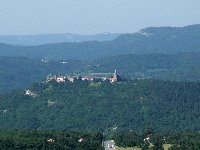
| -
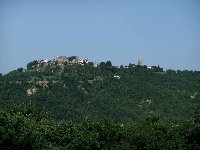
| -
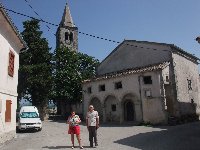
| -
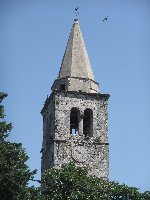
|
65. Panorama of Boljun -
Boljun látképe | 66. Boljun | 67. The bigger church "Sveti Juraj" (St George) of Boljun - A nagyobbik boljuni templom, "Sveti Juraj" (Szt. György) | 68. Church tower-
Templom torony |
-
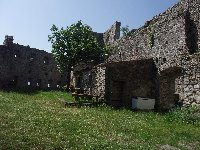
| -
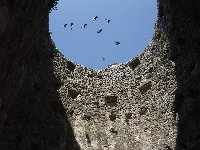
| -
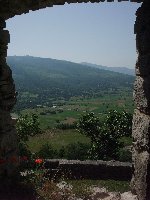
| -
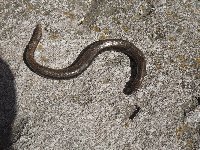
|
69. In the fortress of Boljun -
A boljuni erődben | 70. Rondella | 71. View from the fortress to Učka mountain - Az erődből az Učka hegyre van kilátás | 72. Anguis fragilis (or slow worm or blind worm) - Lábatlan gyík - in Croatian: sljepić |
-
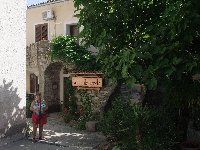
| -
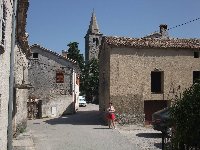
| -
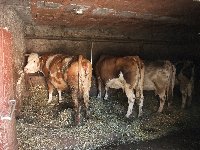
| -
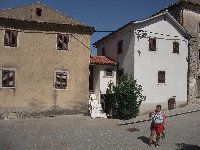
|
73. The "konoba" (means restaurant) -
A "konoba" (vendéglő) | 74. The main square - A főtér | 75. Cows - Tehenek | 76. The house of our friends - Barátaink háza |
-
|
|
|
 MAIN
PAGE MAIN
PAGE
 HIKING
PAGE HIKING
PAGE
|













































































